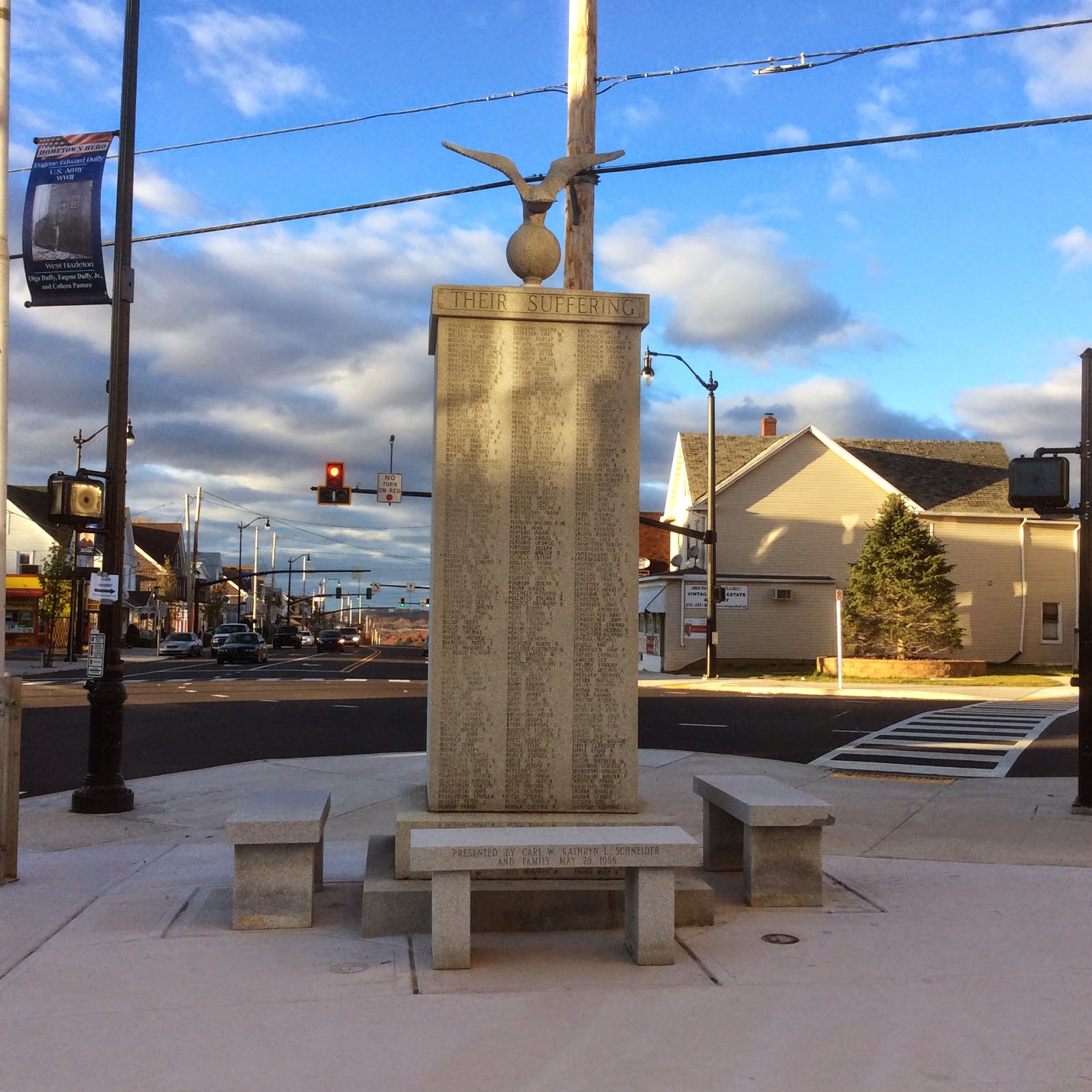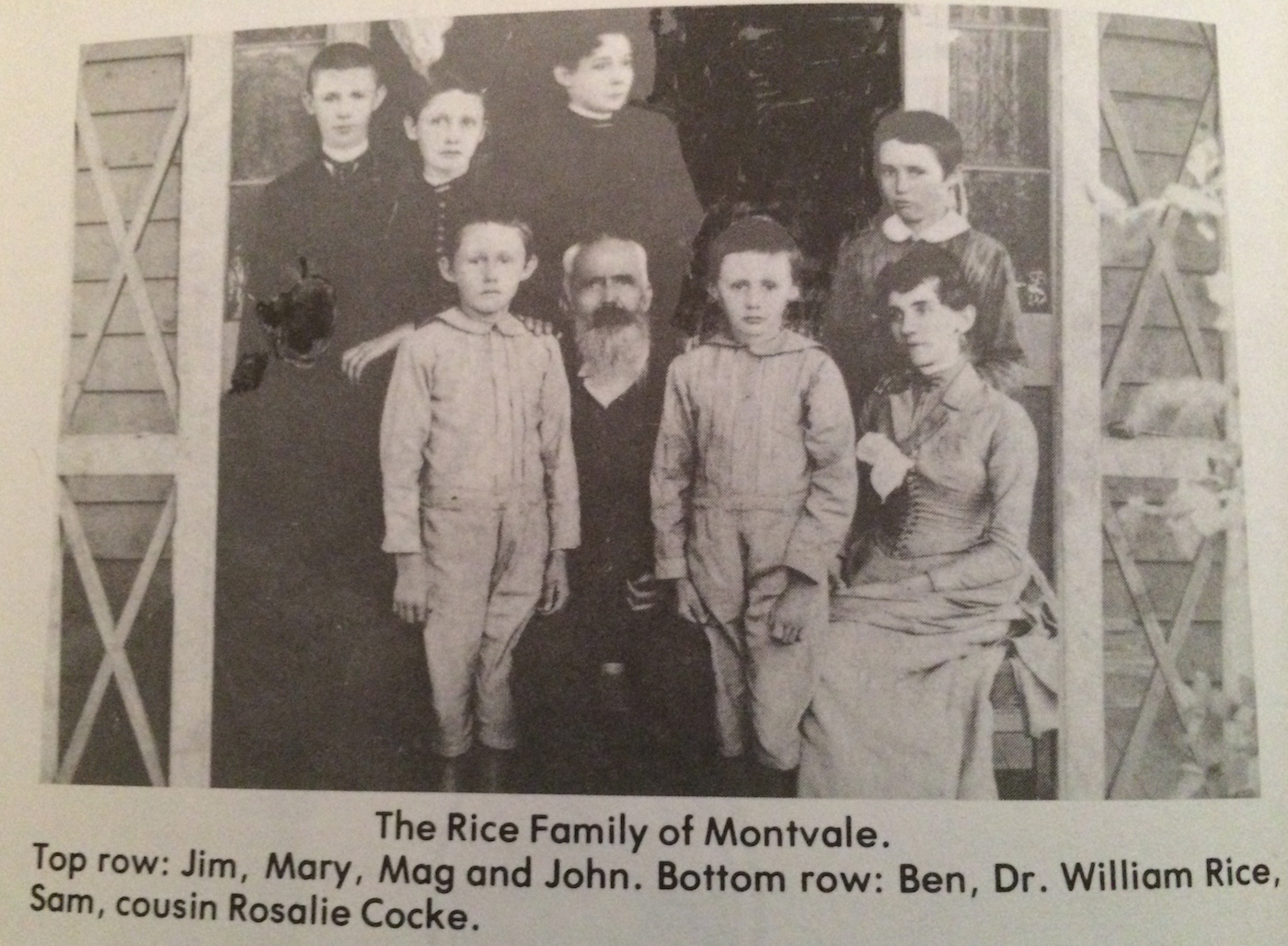Heather Wilkinson Rojo, author of the
Nutfield Genealogy blog, began an
Honor Roll Project a few years ago. The objective of the project is to transcribe and photograph military honor rolls. The transcribed names make soldiers available to search engines so that descendants may one day find find them when searching the Internet.
Last Sunday Pete and I photographed two honor rolls.
Cherrydale World War I Memorial
This memorial is located in the Cherrydale area of Arlington County, Virginia, at 3710 Lee Highway in front of the Cherrydale Health and Rehabilitative Center building. This was an interesting memorial to find. Every website that includes it says it is located at North 20th Road, but that is a residential area and no memorials or monuments were found on that two-block street. I grew up not far from Cherrydale and still go to my childhood dentist. I remembered something that looked like a memorial when we drove down Lee Highway on our semi-annual visits to the dentist. But where exactly? I finally spotted it mostly hidden underneath a crepe myrtle tree and we were elated to find it -- a wonderful example of a "hyper" local memorial.
 |
| Cherrydale World War I Memorial, Arlington County, Virginia |
Transcription:
1917-1918
Erected in honor of the boys of Cherrydale, Virginia who gave their lives in the World War
Lieut. John Lyon, USA
Lieut. Irving T. C. Newman, Aviation Corps
Frederick Wallis Schutt, USN
Archibald Walters Williams, USN
Privt. Harry E. Vermillion, USA
By the Francis Wallis Chapter, Daughters of the American Revolution
1925
Fairfax County Courthouse War Memorial Plaques
The historic Fairfax County Courthouse is actually located in the independent city of Fairfax. On the courthouse grounds near the intersection of Rts. 123 and 236, are two monuments dedicated to those killed in the service of their country from Fairfax County. The Marr Monument commemorates Confederate soldiers and the other monument commemorates those who lost their lives in World War I, World War II, Korea, and Vietnam.
The Marr Monument will be photographed at another time.
Transcription:
A tribute to the men of Fairfax County who in the spirit of loyalty served their country in 1917 -- the World War -- 1918
Died in the service
Thomas L. Brady
James F. Carper
Clarence M. Dawson
William I. Deardorff
Howard Derr
Percy J. Dove
C. Bryant Dyer
Willie R. Fairfax
Corliss M. Fox
Clarence Cunnell
Caleb W. Hall
Robert N. Kendall
Stephen P. McCroarty
Warnie V. McIntosh
John R. Mitchell
Raymond Rogers
William J. Sampson
Roger Stambaugh
Walter L. Tavenner
Joseph Thompson
Charles Conic
Frank Cook
Harry Hatcher
John W. Harris
Morris Lucas
Arthur C. Morgan
Perry Robinson
Richard Weaver
George White
Daniel Webster Williams
Erected under the auspices of the Fairfax County Chapter, Daughters of the American Revolution
Transcription:
1941 -- World War II -- 1945
Flavious B. Allder
Richard R. Arnold
James V. Barron
Harry L. Baughman
Leland E. Belgard
Edward A. Belknap
Charles E. Besley
James H. Brett, Jr.
Thomas W. Bridges
Corbin B. Bryan, III
Daniel C. Budd
Alex E. Campbell
Richard B. Carmichael
Stanly L. Carts
David C. Cather
Willis U. Chinn
Milvin S. Cobb
Robert E. Cockehill
Richard L. Coffeen
John O. R. Cole
Raymond L. Cooper
Thomas J. Cunningham
Garland W. Davidson
Leonard R. Davis
Claude S. Deavers
John T. DeBell, Jr.
Joe De Ganahl
G. W. Donovan
Eugene F. Garr
Robert A. Feltner
John W. Ferguson, Jr.
Ralph P. Ford
Paul H. Fraley
George W. Frame
Howard R. Garner
Robert J. Girard
Robert M. Graves
Warren L. Hawley
John W. Heath
John Heitmann
Edwin B. Hutchinson, Jr.
R. L. Hutchison
Miller O. Jackson
Vincent Kane
Harry H. Kanmermier
John M. Koutsos
James G. LaMarre
John R. Lane
Richard W. Leary
Norman E. Leppert
Charles E. Lewis
Joseph K. Linkins, Jr.
Ralph T. Lynn
William M. McCarthy
Alfred B. McClure
Joseph W. Madden, Mr.
Lindon R. Marshall
Julian E. Martin
Raymond J. Martin
Ellis S. Middleton, Jr.
Reuben C. Moffat
Ira C. Morris
Allen J. Murray
Calvin G. Neigh
Carl E. Niswander
Walter J. Norford
Kenneth H. Ogden
William A. Otis
Harlie Pace
Daniel S. Payne
John E. Peabody
Henry B. Pearson
Phillip E. Pergande
Foster Perzel
Ross R. Poole
William C. Powers
Russell A. Quick
Charles D. Reeve
Larry W. Roberts
C. E. Shelhorse
Hambleton Slingluff
Sidney D. Spear
John W. Stump
Stephen C. Stuntz, Jr.
George T. Sutphin
James W. Taylor
Carrol M. Thomas
W. W. Thompson
Lawrence T. Turner
Victor T. Turrou
Leonard C. Urquhart
Robert M. Warren
John W. Watkins
Egbert T. Watt, Jr.
Orland I. Webley
James V. Whitmer
Maurice M. Williams
Randolph M. Wood
1950 -- Korean Conflict -- 1953
William P. Brooks
James H. Crutchfield
Alfred W. Fox
Frank H. Forney
Knots Gilmore
Sylvester R. Hays
Benjamin R. Hudson
Jefferson Johnson
Charles L. Marr
Irving Munroe
Warren H. Taylor
Benjamin F. Terrell
Transcription:
1957 -- Vietnam War -- 1975
Balzer, Michael A.
Barone, Sandro N.
Beauchamp, Ernest M.
Bessor, Bruce C.
Blair, Thomas G., Jr.
Blodgett, Douglas R.
Bonnet, C. Christopher
Brown, Charles E., Jr.
Browne, Ray B.
Buckley, Victor P.
Byrne, Paul R.
Carkin, Harvey M.
Caton, Gerald L.
Chaney, Arthur F.
Cole, Randall E.
Colgan, George B., III
Collins, Ross W., Jr.
Consolvo, John W., Jr.
Conway, Raymond L.
Cross, Frank W.
Cross, Frederick W.
Cupp, Robert W.
Davies, Joseph E.
Dean, Robert W.
Dickey, James W.
Dillenseger, Bernard G., Jr.
Donahue, Morgan J.
Donnell, Peter F.
Dunham Bruce J.
Eads, Walter T.
Elliott, Charles H., Jr.
Feagan, Michael J.
Finch, Melvin W.
Fowler, Roy G.
Franks, Ernest R.
Freudenthal, Richard H.
Gaither, Thomas M.
Gibbons, Darrell L.
Gill, Donald W. Jr.
Gosselin, Robert J.
Graham, Bruce E.
Graham, William R.
Gray, Richard T.
Grayson, Welby H., III
Green, Martin L., Jr.
Gunter, Calvin D.
Harvey Cleveland R.
Hawkins, Johnny L.
Heriot, Theodore S., Jr.
Hoffler, Richard W.
Holdaway, Guy
Holland, Kermit W., Jr.
Holmes, William D.
Honse, George E.
Jenkins, John A. V., III
Johnson, Bernard L., II
Johnson, Lorenzo R.
Jordan, Wayne L.
Judy, Herman L., Jr.
Karas, Paul R.
Keberline, Michael J.
Kidwell, Wayne M.
Kilduff, Michael J.
King, James E.
King, Lyell F.
Ledford, Henry A.
Leichliter, Vyrl E., Jr.
Lerner, David A.
Levendis, William M.
Lewis Robert R.
Lilly, Lawrence E.
Lockhart, George B.
Ludwig, Michael E.
Lyberger, Arden R.
MacLeod, Sidney B., Jr.
Malone, Philip N.
Mashburn, Tschann S.
McCants, Leland S., III
McCarron, Michael J.
McDonald, Robert F., II
McElhannon, Kevin C., Jr.
McNulty, Charles R.
Messer, Thomas H.
Monette, Neal E.
Moore, Donald R., Jr.
Mull, Gerald C.
Nadeau, Roland H.
Ninow, William C.
Norris Kenneth E.
O'Callaghan, Brian J.
Overbay, Clarence M., Jr.
Page, Henry L., III
Pardee, Scott K.
Payne, Darnell M.
Peppin, David D., Jr.
Perry, George E., III
Powell, Joseph L., Jr.
Prochaska, Willard F.
Regan, Thomas F.
Richardson, Harry F., Jr.
Riek, Jeffry R.
Robinson, Bruce E.
Robinson, James W., Jr., CMH
Rohlinger, Joseph E.
Rose, Harry Q.
Rumble, Jon M.
Rush, Joseph B.
Sawyer, Kenneth R.
Schlie, Kenneth M.
Scurlock, Allen G.
Shartzer, Joseph C.
Shelton, Leslie L.
Sigholtz, Robert H., Jr.
Simon, Donald R.
Smith, Johnny J.
Spengler, Henry M., III
Steward, Jerry W.
Stone, Lewis L.
Strickler, David F.
Stuller, John C.
Sullivan, Michael N.
Supinger, Claude C.
Suthard, Charles L., Jr.
Sutton, William J.
Taft, Philip J.
Thomas, Michael O.
Thornton, Matthew W.
Thruston, Robert R., III
Touart, Foster J. G., Jr.
Toward, Ronald J.
Umholtz, Darrell R.
Valentine, Jeron F.
Warczak, David J.
Ward, James C.
Ward, Ronald W.
Weiss, Richard E.
Whitbeck, Robert E.
White, Daniel W.
Whitmire, Warren T., Jr.
Williams, Raymond L.
Winkler, John A.
Wolfe, Hiram M., IV
Young, Carl, L.
Bayless, Paul M.
Fairfax County Chapter, National Society Daughters of the American Revolution
American Legion Post No. 177
Veterans of Foreign Wars Post No. 8469
26th North Carolina Infantry
A few months ago, Pete and I toured Battlefield Park at New Bern, North Carolina, and walked the battlefield, which is wooded and quite hilly for coastal Carolina. Along one of the paths, we discovered this monument to the 26th North Carolina Infantry, commemorating the unit's experience at New Bern. One of my first cousin's husband is related to Zebulon Baird Vance.
 |
26th North Carolina Infantry monument at
Battlefield Park, New Bern |
Transcription:
Twenty-Sixth Regiment
North Carolina Troops
Zebulon Baird Vance, Colonel
Abner Bynum Carmichael, Major
Henry King Burgwyn, Jr., Lieutenant Colonel
"Soldiers!! the enemy is before you and you will soon be in combat. You have the reputation of being one of the best drilling regiments in the service. Now I wish you to prove yourselves one of the best in fighting. Men, stand by me and I will by you."
Lt. Col. Henry Burgwyn, Jr.
To the men of the 26th NC on the eve of the battle...
On March 14, 1862, a combined Union army and naval expedition, consisting of 11,000, under the command of Brig. Gen. Ambrose Burnside commenced an assault against Brig. Gen. Lawrence O'B. Branch's 4,000 man Confederate defenses at New Bern.
The 26th NC was assigned to defend the right section of the Confederate line following Bullen Branch from the Atlantic and North Carolina Railroad, west to Bryce's Creek. The right wing of the 26th NC's line covered Weatherby Road and was manned by companies B, E and K of the 26th NC and several attachments, all under Lt. Col. Burgwyn's command. The center of the 26th NC's line, companies C, F, H and I, were under the direct command of Colonel Vance.
The left wing of the 26th NC was defended by companies A, D and G, and was under the command of Major Carmichael. From this line, east to Wood's Brickyard, occurred the most intense fighting of the day. For over three hours the 26th NC, with assistance from the 7th NC and 33rd NC, repelled the enemy's assaults along the railroad and Bullen Branch. A final Union assault on the brickyard succeeded in breaking the Confederate center.
With this, the Confederate forces, holding the line from the brickyard to Port Thompson, retired to New Bern destroying the bridge over the Trent River. The 26th NC, cut off and nearly surrounded, was the last Confederate unit to leave the field. This engagement was the baptism of fire for the 26th NC, which at Gettysburg would sustain the largest numerical losses of any unit, North or South, during the entire course of the war.
26th NC Soldiers Who Died at New Bern
Major Abner B. Carmichael -- Capt. William P. Martin, Co. H
Corporal Michael M. Woode, Co. A
Private M. Kevley, Co. C -- Private Thomas M. McRory, Co. B
Private Joseph Miler, Co. C -- Private Solomon Mullin, Co. B
Private Jackson W. Pope, Co. D -- Private Hugh M. Ray, Co. H
Private William Taylor, Co. A -- Private Lewis B. Tysor, Co. H
In addition to the 11 members who died at New Bern, the 26th NC also lost: 1 man mortally wounded, 9 men wounded, 2 men wounded and captured and 68 men captured for a total of 91 casualties.
Under the leadership of Colonel Zebulon Baird Vance, these North Carolinians made the ultimate sacrifice while defending their native soil. May they always be remembered.
Erected by the Society for the Historical Preservation of the Twenty-Sixth Regiment North Carolina Troops
March 10, 2007











































